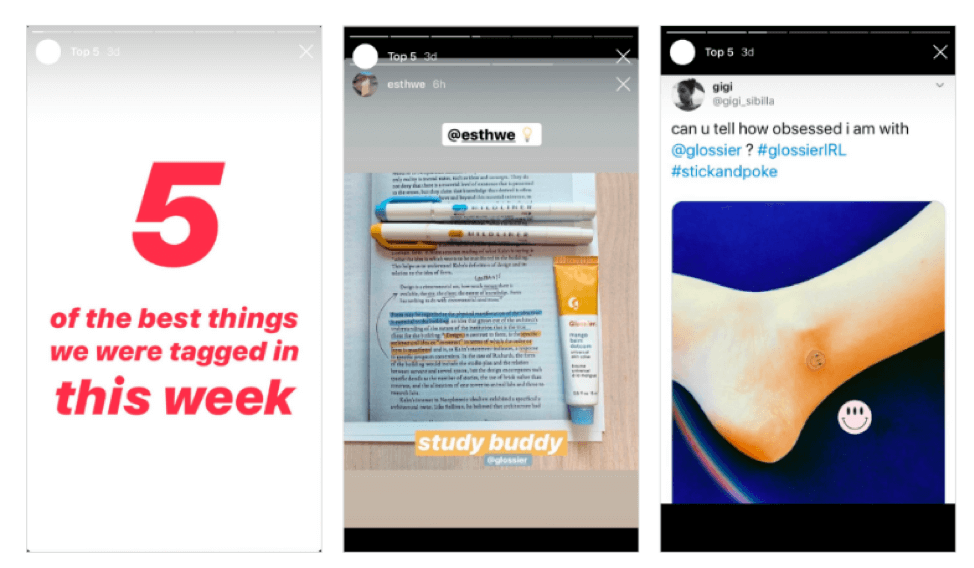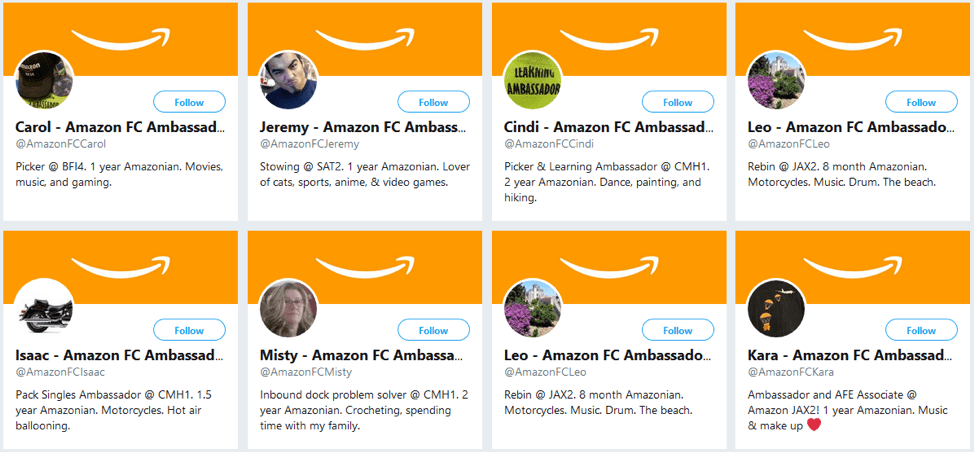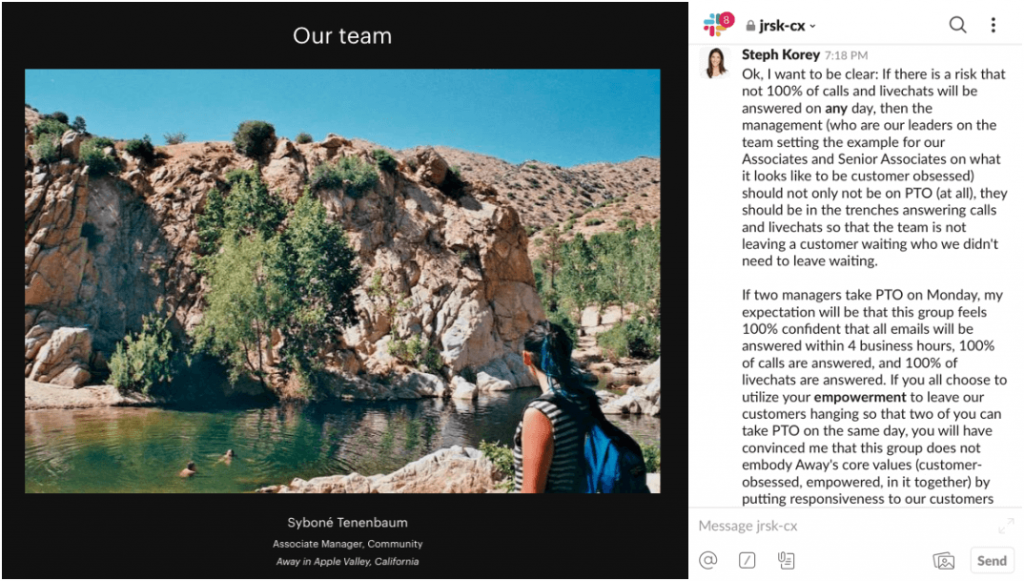For many brands, social media marketing is a key way to reach new customers and connect with the ones they already have—but branded social media accounts have their limits.
For one, your audience is limited to the people seeking out your brand or following your hashtags, unless you’re willing to pay to promote your posts. Next, there’s the question of authenticity.
As friendly as your brand might be on Twitter, there’s still a brand name attached to your account, and followers aren’t afraid to call out the hypocrisy or agenda behind that quirky tweet.

Source: @JordanUhl on Twitter
So how do you adapt your brand’s social media strategy to reach a larger audience more authentically?
By expanding your social media presence beyond your branded accounts.
User-generated content (UGC) has blown up over the past few years, with many brands leveraging their customers to grow their social reach and lend a sense of authenticity.
Companies like Glossier regularly repost their users’ content, encouraging their loyal fan-base to continue to post and tag them for a chance to get featured in their weekly roundup. But user-generated content isn’t always a perfectly on-brand collection of pastel-hued pictures.
If there’s anything the recent proliferation of Baby Yoda memes has taught us, UGC often comes at a cost: brand integrity.

An example of Glossier’s weekly UGC roundup. Source: Later.
For brands looking to gain the benefits of UGC, while avoiding some of the risks, employee advocacy and employee-generated content offer a solution.
Although they might not work in your social media department, employees still have an intimate knowledge of your brand, making them a huge asset when you’re looking to spread your brand message.
That said, there is one important thing that businesses often forget about their employees: they’re people too.
As people, employees have their own voices, messages, goals, and preferences about the way they portray themselves online.
In short, employees have their own brands. To get the most out of employee-generated content, you need to balance your company’s brand with your employees’ personal brands.
What is a brand anyway?
Before we can talk about how to align your company brand with the personal brands of your employees, we need to take a little detour. What is a brand and how do you maintain its integrity?
A brand consists of the associations, memories, stories, and feelings people associate with your company. It exists only in the minds of your customers.
No matter how many times you call yourself one thing, if everyone knows you as something else, that’s what you are. So, even before you start delving into user or employee-generated content, your brand isn’t entirely in your control.
While you can’t completely control your brand, you can control some aspects of your brand. The mediums, materials, and messages you use to portray yourself consistently and influence your image are well within your control—and are major contributors to brand integrity.
By ensuring your employees understand and are aligned around those mediums, materials, and messages, you can bring employee and company brands closer together.
So, as you look to preserve your brand integrity, focus on your brand identity—and all the ways your employees can bring it to life on social media.
The problem with employee advocacy
Now that we’ve covered what brand is, let’s get into the specifics of aligning your brand with your employees’ brands.
To get this process right, it helps to start by looking at some of the ways it can go wrong. Most issues with employee advocacy on social media start with the company, not the employees.
There are three main ways these issues manifest: mandatory advocacy, excluding employees from the brand, and not providing the right tools.

Amazon’s unnatural-looking and unnaturally happy employee advocate accounts have attracted suspicion. Source: TechCrunch
Mandatory advocacy
To start, let’s talk about mandatory employee advocacy. There are a number of reasons why employees might not want to act as brand ambassadors on social media. They might have specific plans for their social presence.
They might be completely off the grid when it comes to social media. More likely than either of these options, they might just not feel motivated to.
To address this lack of motivation, many companies mistakenly turn towards mandatory advocacy as a solution.
While strongarming employees into tweeting on your behalf might work in the short-term, long-term employee-generated content strategies start with company culture. Your employees should want to create and share content for your brand.
Creating a great culture incentivizes employees to create content. If employees are connected with your company emotionally, they’re more likely to want to associate their brand with yours.
Brand exclusion
Excluding employees from the creation of your brand is where the second issue comes in.
For employees to identify with your brand, you need to include them within that brand. Whether you’re just establishing your brand or re-evaluating it, bring your employees into the fold.
Especially for elements of your brand like mission, vision, and values, you should check to see whether they align with employee perceptions. Just as your brand only exists in your customer’s mind, your culture only exists in your employees’ minds.
If your lived culture doesn’t match up with the culture employees know, they’re less likely to feel connected to your company.
If you want an example of what this process looks like, Zappos famously crowdsourced their values from employees.

A sample of some of Zappos’ core values. Source: Zappos
Lack of tools
The last issue that employers create for their employee ambassador programs is simply not giving employees the right tools.
Even if an employee is willing and eager to post about your brand, if they’re not sure how to, they likely won’t.
While a bit of caution on your employees’ part can serve to protect your brand’s integrity, too much caution can mean missing out on employee advocacy altogether.
If you’re unwilling to do your part in providing employees with the right tools, don’t be surprised when they’re unwilling to do their part in posting.
How to create a successful employee advocacy program
Now that we’ve gone through what can go wrong with employee-generated content, let’s look at how to get it right. As we mentioned before, getting this process right requires harmony between your employees’ personal brands and your company’s brand.
Creating the right hiring process
Perhaps the easiest way to align your company brand with employee brands is to start with the right employees.
By bridging the gap between employee and employer brands early on, you not only create a culture fit that benefits your company’s productivity but also set the stage for employee advocacy down the line.
Taking your brand into account during hiring doesn’t mean only hiring people who align perfectly with every part of your brand.
It means finding people who overlap with your key brand values, people whose personal brands complement and contribute to your company’s brand.
Living your brand
While hiring for brand alignment is important, maintaining that alignment is even more important.
If you want your employees to identify and align with your company’s brand, you need to make that brand a part of their everyday life.
It’s this kind of authenticity that will earn you the authenticity of employee-generated social content.
Your mission, vision, values, and messages should not just be something employees hear during onboarding, but something they see in every area of your company.
By incorporating your brand into every aspect of your workplace, employees have a better understanding of the brand you’re asking them to promote, as well as the affinity to want to do so.

Suitcase company Away encourages employee wanderlust, featuring images of adventuring employees on its website. Meanwhile, employees were pressured by the CEO to work all hours to keep up with demand. Source: Away and The Verge.
Giving employees the right tools
Giving employees the right tools to use on social media makes it easier for them to create their own content—while still maintaining your brand integrity.
Beyond the mission, vision, values, and messages that make up your culture, your employees should also be familiar with your brand materials.
If you’re looking to control your brand integrity a bit more, this might mean providing employees with images and messages they can copy and paste directly into their posts.
If you’re looking to offer employees a bit more creative license, it might mean offering them access to your full collection of logos, fonts, colors, and language to leverage in their posts.
Empowering employees
For the sake of your brand integrity, the channels, messages, and language you don’t want to be associated with are important for employees to know.
But focusing on the “don’ts” of your employee advocacy program can discourage employees from posting altogether.
Instead, focus on the positives of what they can do, while offering guidelines of what might not work for your brand.
To get the most out of employee advocacy, you need to empower employees to incorporate their personalities and personal brands in their posts.
The authenticity of employee-generated content doesn’t come just from having the employee’s name at the top of the post. It also comes from each employee’s unique voice.
If you’ve done the work to hire for brand alignment, bring your brand to life in your culture, and provide the right brand materials, empowered employees will take care of the rest.
Letting employees do their thing
Now that you’ve done the work of setting up your employee-generated content program for maximum brand integrity, it’s time for the hardest part: letting go.
For employee advocacy to work effectively, you need to be okay with a certain level of uncertainty.
Your employees aren’t just megaphones for your brand.
If you want to pursue employee advocacy, you need to be okay with your employees taking some liberties in making your brand their own.
While you can always course-correct to encourage the kind of social media posts you want to see, there are no guarantees in EGC.
For those willing to accept the risks, employee-generated content brings big rewards—with greater reach and greater authenticity just a post away.






